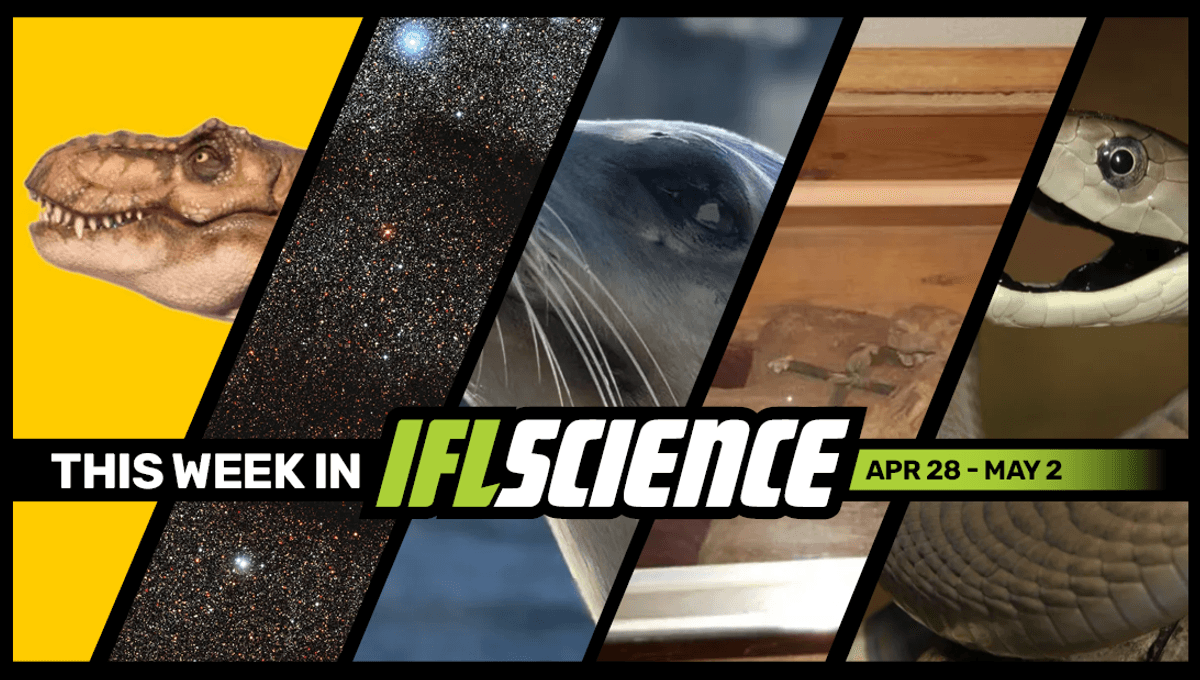
This week, one of the closest large gas clouds ever was detected near Earth, just 300 light-years away, and it takes up as much sky as a typical constellation. An exceptionally well-preserved Austrian mummy has been embalmed using previously unknown methods, and a snake collector has inspired an antivenom previously thought impossible by letting himself get bitten many times. Finally, we ask if scientists have a responsibility to fight misinformation about their subjects.
Create an IFLScience account to get all the biggest science news delivered straight to your inbox every Wednesday and Saturday.
T. Rex Handbags Could Soon Be A Thing In Surprising Approach To Cruelty-Free Leather
In The Devil Wears Prada, Andrea Sachs thinks she’s all that when she walks into work wearing the Chanel boots, but a new pair of kicks are about to stomp all over her parade: enter, Tyrannosaurus rex leather. That’s the vision of a new partnership working to create what they say will be a more sustainable and cruelty-free alternative to leather in the luxury market, built from fossil T. rex collagen. Read the full story here
There’s An Enormous “Glow In The Dark” Cloud Of Gas We Never Noticed Remarkably Close To Earth
One of the largest structures in the sky, as seen from our perspective, has only just been discovered. It’s an enormous cloud of molecular hydrogen gas that may one day condense down into stars. However, because its light is only detectable in a rarely studied part of the spectrum, all this gas has not been seen until now. Read the full story here
Ronan The Remarkable Beat-Keeping Sea Lion Has Better Rhythm Than Some Humans
Remember Ronan the famous head-bopping sea lion? Well Oh my god, she’s back again [dun-na-na-nuh]. Brothers, sisters, everybody sing because since her early days of bopping along to the Backstreet Boys’ Everybody, Ronan’s talents have been verified in a recent study that declared her rhythm is better than that of some humans. Read the full story here
Exceptionally Well-Preserved Austrian Mummy Was Embalmed With Previously Unknown Method
When we think about mummies, I’m willing to bet the first images that come to mind relate to Ancient Egypt. However, mummification has been practiced by many cultures across the world, and as you can imagine, each has developed their own embalming methods for this purpose. But not all of these various methods receive the same attention, and some are cruder and more inventive than you’d expect. Read the full story here
Snake Collector Let Himself Get Bitten So Many Times, He’s Inspired An Antivenom Previously Thought Impossible
In the ultimate case of “don’t try this at home” the efforts of a man who exposed himself to the venom of some of the world’s most dangerous snakes has led to a broad-spectrum antivenom. So far, the antivenom has only been tested in mice (most human subjects being more risk-averse than the original donor). However, the authors of a new paper are confident they are closing in on a single antivenom effective against the world’s most common snakebites. Read the full story here
TWIS is published weekly on our Linkedin page, join us there for even more content.
Feature of the week:
Do Scientists Have A Responsibility To Fight Misinformation About Their Subjects?
In April last year, the extremely popular The Joe Rogan Experience podcast hosted a high-profile debate between two guests. On the one side was Flint Dibble, a professional archaeologist at Cardiff University in the UK, and on the other, was Graham Hancock, a British writer. The stakes: whether or not there is evidence of a long lost, super advanced global civilization that was mysteriously destroyed by rising sea levels around 20,000 years ago. We spoke to three currently working scientists, including Dibble, to find out how they feel about the role scientists play in fighting misinformation, and whether they believe there is a responsibility to address false claims related to their field. Read the full story here
More content:
Have you seen our e-magazine, CURIOUS? Issue 34 May, 2025 is available now. This month we asked, “Why Do We Love Nostalgia?” – check it out for exclusive interviews, book excerpts, long reads, and more.
PLUS, the We Have Questions podcast – an audio version of our coveted CURIOUS e-magazine column – continues. In episode 8, we ask, “What Happens To Eyes During The Mummification Process?”
Season 4 of IFLScience’s The Big Questions podcast has concluded. To revisit all of season four’s episodes, click here.
Source Link: T. Rex Handbags Could Soon Be A Thing, Ronan The Sea Lion Has Better Rhythm Than Some Humans, And Much More This Week